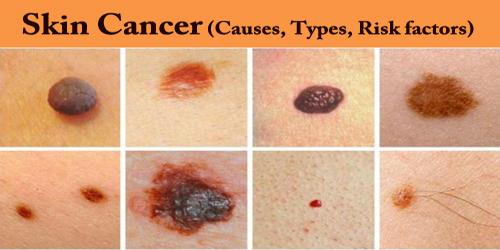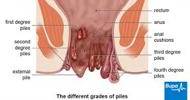The application of amniotic fluid cells obtained during 16–24 weeks of pregnancy as a novel sample type for RNA-sequencing in prenatal diagnosis has been discovered by a clinical research team from the Department of Paediatrics and Adolescent Medicine and the Department of Obstetrics and Gynecology, School of Clinical Medicine, LKS Faculty of Medicine, The University of Hong Kong (HKUMed). This will enable more families to receive individualized clinical management.
It is the first proof-of-concept study in the literature to show how amniotic fluid cells’ RNA-sequencing can be useful in the therapeutic setting. The ground-breaking findings have been published in the academic journal, npj Genomic Medicine.
Rare diseases are usually genetic in origin. Based on the team’s earlier research, uncommon diseases were determined to affect 1 in 67 people in Hong Kong, despite being individually rare. The precise counseling for better clinical management and future pregnancy planning that can be provided by the identification of genetic causes in rare disorders is crucial to supporting the patients.
Current technologies for prenatal diagnosis are largely DNA-based, with a large proportion (60-70%) remains undiagnosed, leading to clinical uncertainty and parental anxiety. Recently, RNA-sequencing has been found to increase diagnostic yield by 10% to 36%, however, none of these studies focused on prenatal diagnosis.
Additionally, despite the existence of a well-established, sizable database that catalogs the gene expression profile of many tissues in adults, there is a dearth of a comparable publicly-available dataset for amniotic fluid cells that reflect the embryological and fetal stage. Further study and research on RNA-sequencing in prenatal setting is thus necessary.
Amniotic fluid cells’ potential clinical value for RNA-sequencing was established by the research team. By using RNA-sequencing on more than 50 amniotic fluid samples, a baseline for the gene expression profile of amniotic fluid cells is created.
In order to apply RNA-sequencing to the currently chosen clinical diagnosis procedure, the establishment of a gene expression profile is a crucial step. They discovered that the number of genes in amniotic fluid cells that were expressed at high levels was comparable to other therapeutically accessible tissues that are frequently employed for genetic diagnosis in a variety of disease categories.
It is an honour for HKUMed poster to be selected and scored as the top 10% of poster abstracts in this international conference. RNA-sequencing has great potential in solving unexplained genetic disorders. We will continue to strengthen ties and collaborations with institutions in Hong Kong and abroad, contribute to international scientific research and bring benefits back to our local patients.
Dr. Brian Chung Hon-yin
In order to identify potential outliers, the research team additionally compared the RNA-sequencing data of four affected fetuses with structural congenital defects with the established baseline. A bioinformatics pipeline was modified in partnership with the Technical University of Munich in Germany to improve the detection of outliers for later study.
Further in-depth curation showed that outliers can be identified in genes associated with the corresponding structural congenital anomalies in all four affected fetuses. Identifying the outliers provide more evidence at the RNA level to help diagnosis.
The findings of this study have significant implications in solving undiagnosed rare diseases in Hong Kong. It is the first time that amniotic fluid cells RNA-sequencing is reported to provide potential clinical utility in prenatal diagnosis in literature.
Precision medicine, such as individualized clinical management and preimplantation genetic diagnosis for families with family history, are made possible with the identification of the genetic reason.
This study was selected as the ‘Reviewers’ Choice Abstract’ (top 10% of poster abstract) at the American Society of Human Genetics (ASHG) Annual Meeting 2022, one of the largest conferences of its kind, in which scientists from around the world are selected to present their cutting-edge research findings collaboratively.
“It is an honour for HKUMed poster to be selected and scored as the top 10% of poster abstracts in this international conference. RNA-sequencing has great potential in solving unexplained genetic disorders. We will continue to strengthen ties and collaborations with institutions in Hong Kong and abroad, contribute to international scientific research and bring benefits back to our local patients,” said Dr. Brian Chung Hon-yin, Clinical Geneticist, Clinical Associate Professor, Department of Paediatrics and Adolescent Medicine, School of Clinical Medicine, HKUMed.
Dr. Anita Kan Sik-yau, Honorary Clinical Associate Professor, Department of Obstetrics and Gynaecology, School of Clinical Medicine, HKUMed cum Deputy Laboratory Director of the Prenatal Diagnostic Laboratory at Tsan Yuk Hospital added, “On the memorable occasion of Tsan Yuk Hospital (TYH)’s 100th Anniversary, this study demonstrated TYH’s exceptional service for Hong Kong over the past century, and continuous effort to contribute to all those in need, alongside innovative research.”
Research team
Dr. Brian Chung Hon-yin, Clinical Associate Professor, Department of Paediatrics and Adolescent Medicine, School of Clinical Medicine, HKUMed; Dr. Anita Kan Sik-yau, Honorary Clinical Associate Professor, Department of Obstetrics and Gynaecology, School of Clinical Medicine, HKUMed, led this research. Mianne Lee, MPhil candidate, and Dr. Anna Kwong Ka-yee, Assistant Research Officer, Department of Paediatrics and Adolescent Medicine, School of Clinical Medicine, HKUMed are the first authors.
Other contributors included Dr. Christopher Mak Chun-yu, Martin Chui Man-chun, Jeffrey Chau Fong-ting, Department of Paediatrics and Adolescent Medicine, School of Clinical Medicine, HKUMed; Dr. Kelvin Chan Yuen-kwong, Dr. Sandy Au Leung-kuen and Lo Hei-man, Department of Obstetrics and Gynaecology, School of Clinical Medicine, HKUMed. International collaborators were Professor Julien Gagneur and Dr. Vicente A Yépez from Department of Informatics, Technical University of Munich, Garching, Germany.
This study was supported by The Society for the Relief of Disabled Children, Health and Medical Research Fund of the Health Bureau, the Government of the Hong Kong Special Administrative Region and the Mr. and Mrs. Edward CM Wong Foundation.
















